People
Comedian Julio Torres Has a Surreal New HBO Special About His Favorite Shapes. He Has Thoughts About Art, Too
We talk to Torres about what he learned from Marina Abramovic, Zaha Hadid, and Jed Perl, among others.
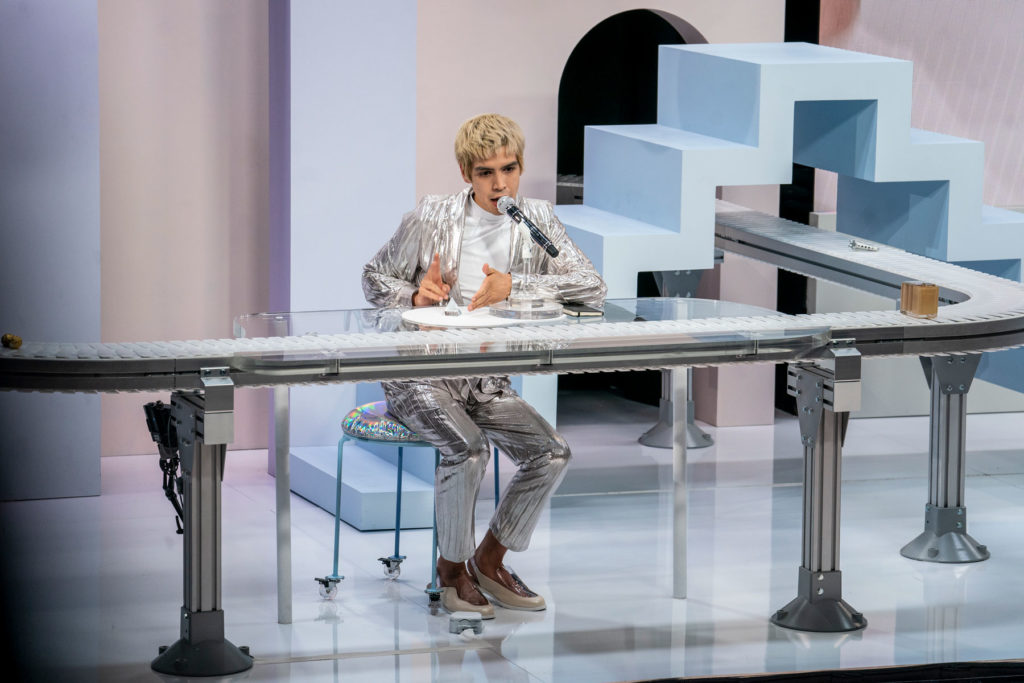
We talk to Torres about what he learned from Marina Abramovic, Zaha Hadid, and Jed Perl, among others.

Taylor Dafoe

Julio Torres is an aesthete. His favorite color is “shiny” (followed closely by “clear.”) He’ll happily tell you this—but it’s also obvious just by looking at him. With platinum-blonde hair, chrome-colored clothing, and a thin film of glitter covering his skin, he looks like a pop star sent from the future.
Born and raised in El Salvador, Torres moved to New York in the late 2000s to attend the New School. He began performing a few years later, and has since developed a distinct brand of comedy that crosses over into experimental territory. Show your parents his comedy and there’s a good chance they just won’t get it. His rhythm is unfamiliar. There’s no quick setup-punchline, setup-punchline formula. Instead, he begins many bits with “ums” or dramatic deep breaths.
But he’s also resonating with the mainstream. For the last few years, Torres has worked as a writer on Saturday Night Live, where he’s been behind many a talked-about sketch (for instance, the viral “Papyrus,” in which Ryan Gosling played a graphic designer enraged and tormented by the font from the Avatar poster). This year, he also co-starred in the Fred Armisen-created HBO show Los Espookys.
On August 10, Torres will debut his new one-hour comedy special on HBO, titled “My Favorite Shapes,” which finds the slight, platinum blond comedian sitting before a conveyor belt as a parade of his favorite “shapes” rolls past. Here, he treats the concept of “favorite shape” in the same offbeat way as he treats the question of “favorite color”: Included in his list of favorites are a glass slipper, a McDonald’s Happy Meal toy, and a pearl named “Timothée Chalamet.”
“I think they beg for my attention,” Torres tells artnet News when asked if he picks his shapes or his shapes pick him. “I’ll be like, ‘Ooh. Who are you? Let’s do a show. I think I can cast you in something.’”
Ahead of the special’s premier, Torres sat down talk about his favorite objects in art and design—think of them as art-specific bonus cuts from My Favorite Shapes. While he was at it, he also revealed how the art critic Jed Perl got him a job and the time he made Marina Abramovic cry.
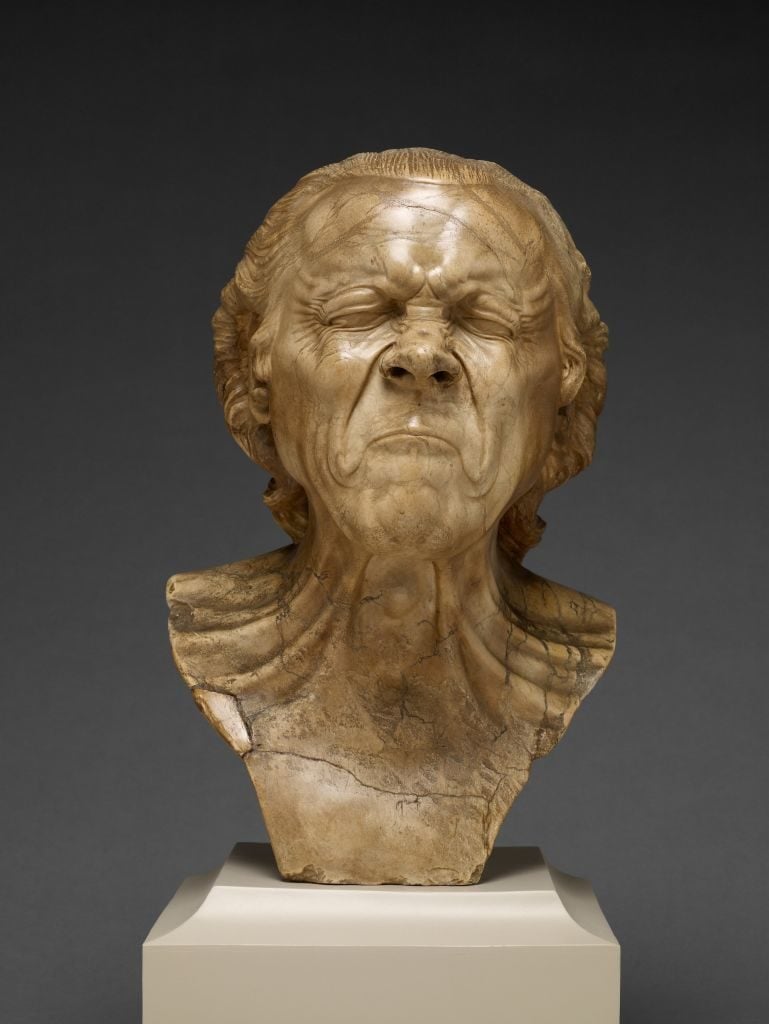
Franz Xaver Messerschmidt, The Vexed Man. Photo: Sepia Times/Universal Images Group via Getty Images.
“An exhibition of Franz Xaver Messerschmidt busts was the first show I saw at the Neue Galerie. I just thought it was so funny. I don’t know if I recall the story correctly or not, but I think there was some patroness who wanted him to make these busts that resembled her friends, which is such an odd request. I just think it’s so funny that a sculptor was like, ‘Well, how about they’re not regal and serene but instead they’re making these funny faces.’ It’s like comedian as artist—or artist as comedian, which I really like.”
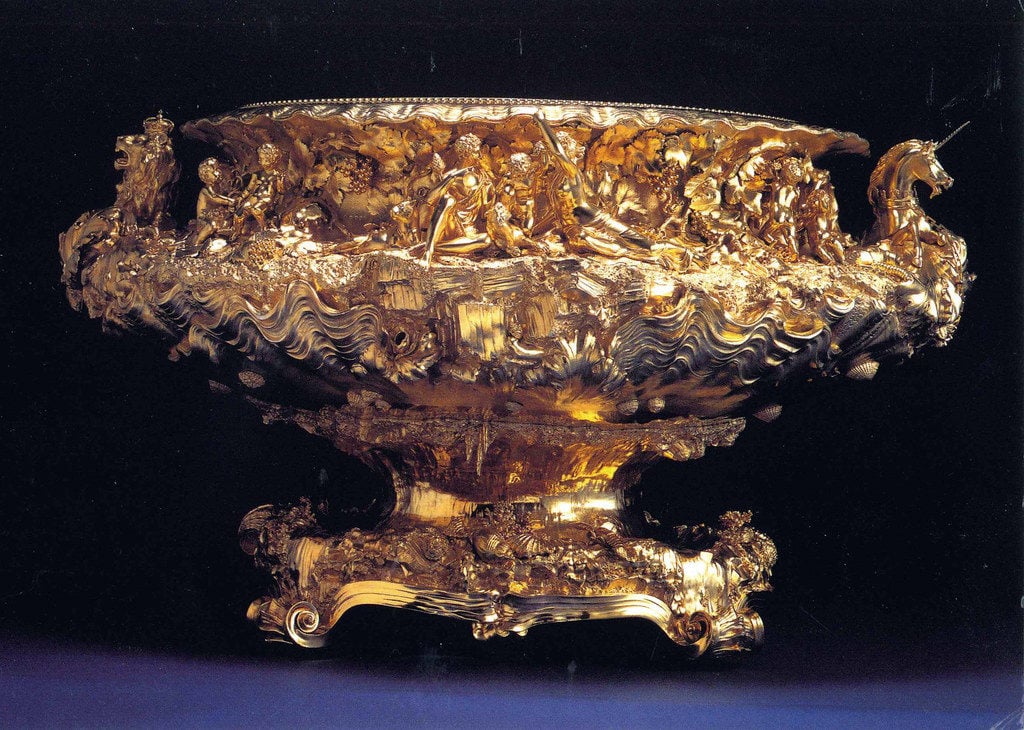
The Wine Cistern, or Grand Punch Bowl, made for King George IV, included in the Crown Jewels collection.
“The Crown Jewels in London is a heavily touristy place, obviously. You move about the space almost as if going through a Disney installation—you’re timed and they keep it moving along and you can’t take pictures of anything. But there was this big golden, incredibly ornate goblet there that I’ll always remember. One of the handles was a lion and another handle was a unicorn—of course. The unicorn had a gold chain around its neck. And I just thought it was so… sexy. This golden unicorn struggling with a golden chain around its neck.”
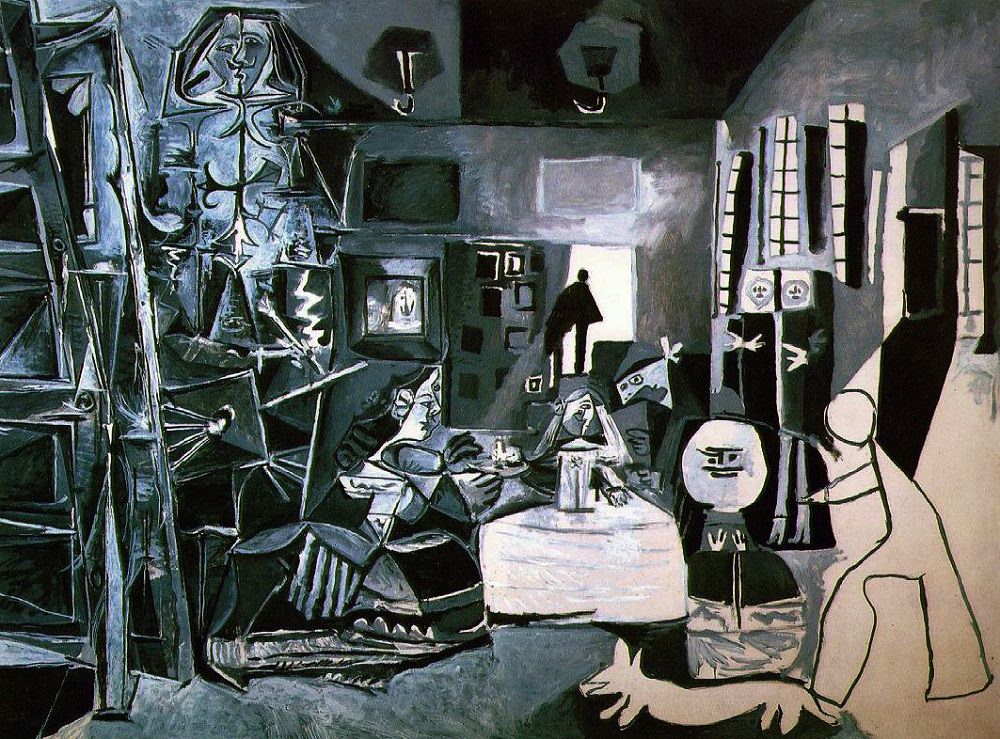
Pablo Picasso, Las Meninas (1957).
“My dad’s favorite painting is Velazquez’s Las Meninas. He would show it to me often and talk to me about the mirrors in it. It’s a really great painting for learning about art. Now, doing what I do and going about life the way I go about life, I feel a bigger connection to Picasso’s cover of Las Meninas—his take on it. I like that the idea of someone saying, ‘No, let me abstract it. Let me fix it.’
As a matter of fact, I was just in Barcelona and I went to the Picasso museum there. It was sort of this unintentional pilgrimage because, when I was at the New School, I wrote a paper on Picasso’s Guernica, about abstraction and distortion and war through a shattered lens, etc. etc. etc. Jed Perl, the art critic, was my professor. He took a liking to me after that paper and that got me the job that kept me in the country. I was the archivist for this tiny foundation called the Heliker-LaHotan Foundation that looked after the works of those two artists. I worked in a little windowless room, measuring stuff and entering data. It wasn’t my lifestyle, but it was stimulating in a way and I did like the paintings.”
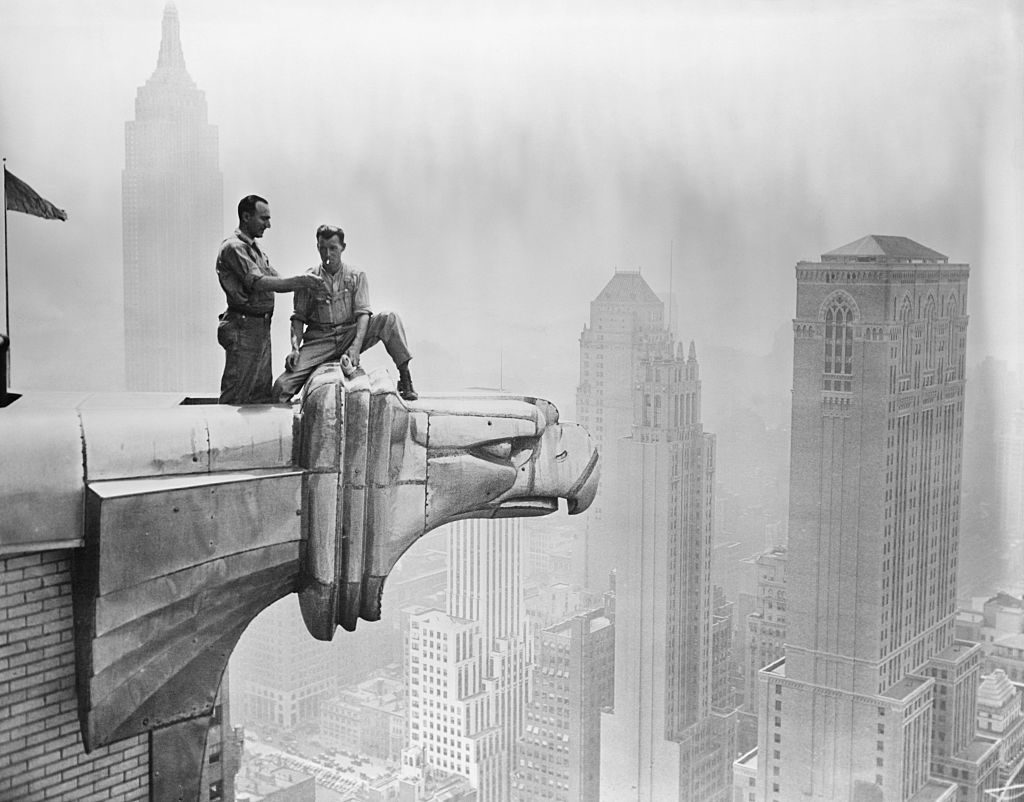
A man lights a fellow worker’s cigarette as they take a break on a Chrysler Building gargoyle. Courtesy of Getty Images.
“One of the biggest bummers for me when I moved to New York was learning that the insides of places like, say, the Chrysler Building, aren’t as beautiful as the outsides. The offices inside it aren’t these Deco-decadent interiors; they just look like cubicles. I love the gargoyles on the Chrysler building, though. I wrote a little play about one of them in college. In it, a friend of mine played a woman who fell in love with a gargoyle from the Chrysler Building. She kept talking about leaving her husband, whom she despised, for the gargoyle. But she never did.”
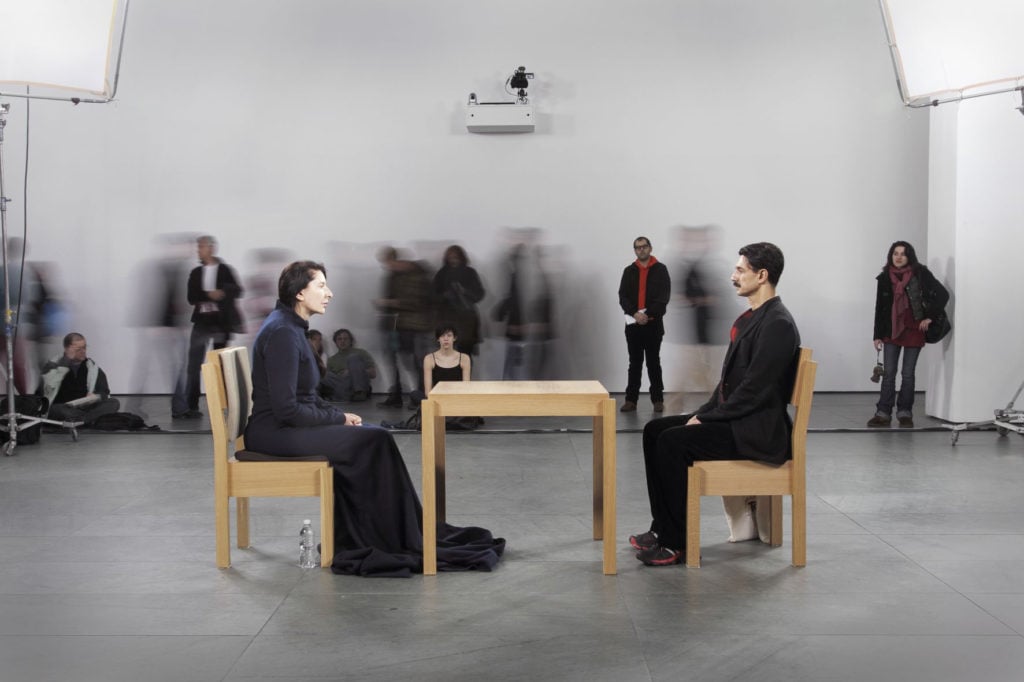
Marina Abramovic: The Artist Is Present Photo by Marco Anelli. © 2010 Marco Anelli
“We have to add Marina’s brain to the list. Or maybe the borderline Ikea furniture that she performed The Artist Is Present on at MoMA. A friend of mine was so into Marina Abramovic at that time. I was skeptical, especially after it became this thing where we’d have to wait outside all night. But I was like, ‘Ah, okay,’ and we did—we waited all night. It was a very interesting experience. Most of the people in line were performance artists—it was very much a pilgrimage for them. When it was my turn, I sat down across from her and looked into her eyes. After a moment, she started weeping. I think she was just so tired. Then a guard tapped me on my shoulder and just said ‘the performance is now over, sir.’ I think she needed to reset. She didn’t cry for everyone, though. I got a cry.”
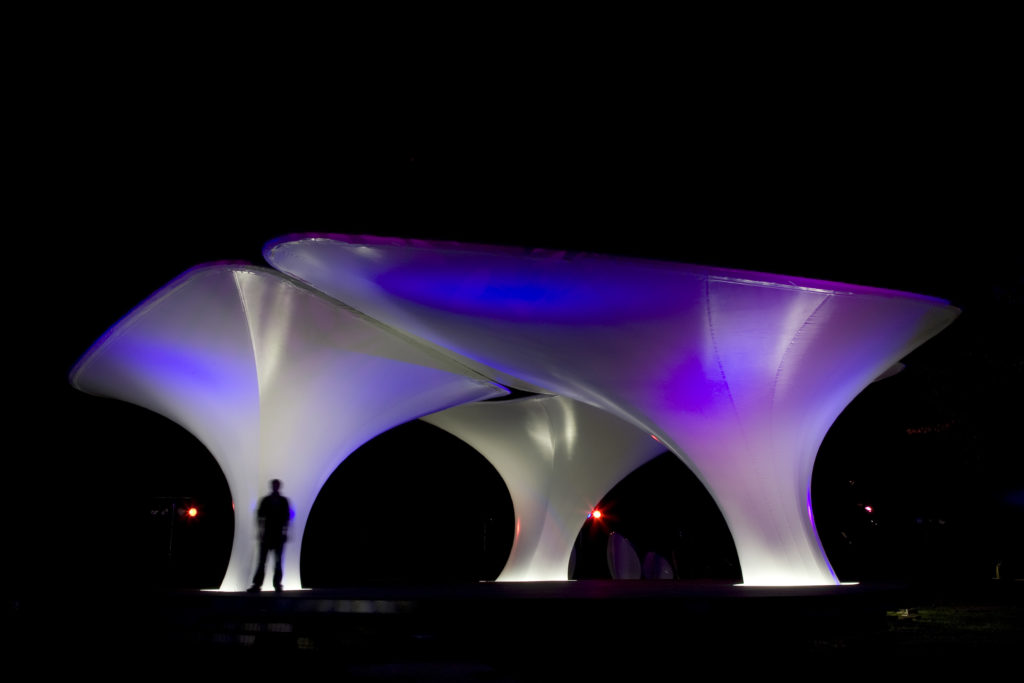
Zaha Hadid’s Lilas Pavilion at the Serpentine Gallery, London. Photo: View Pictures/Universal Images Group via Getty Images.
“My mom is an architect, so I’ve always gone into places and been very stimulated by interiors. I visited the space next to the Serpentine when I was in London doing the Shapes show—it was just so exciting. There’s just nothing better to me than when the interior matches the exterior and it’s all a complete, coherent thought—unlike the heartbreaking Rockefeller Center or Chrysler Building experiences. She’s a very sensual architect. I strive to do that with the work that I do too. The stage and the clothes and the joke and the hair—it’s all the same.”